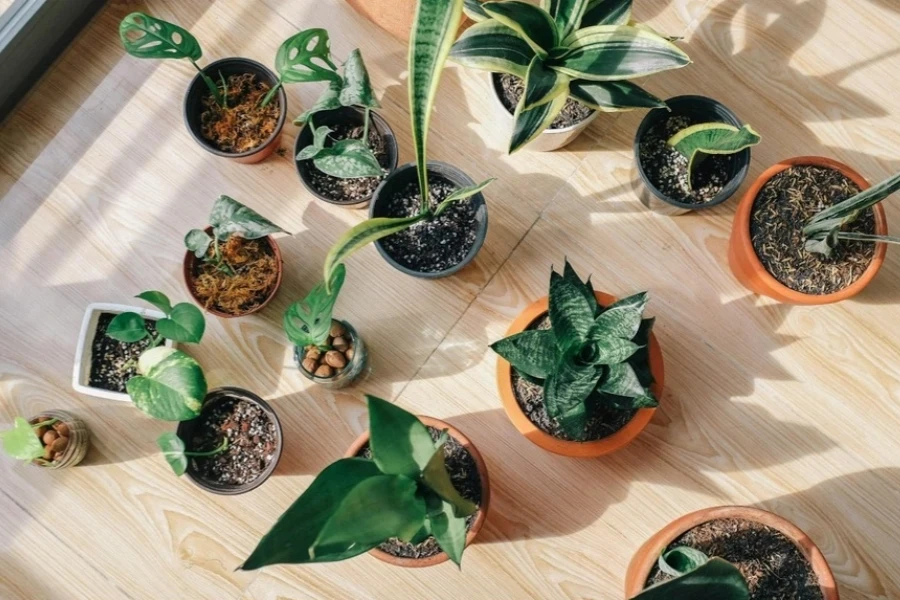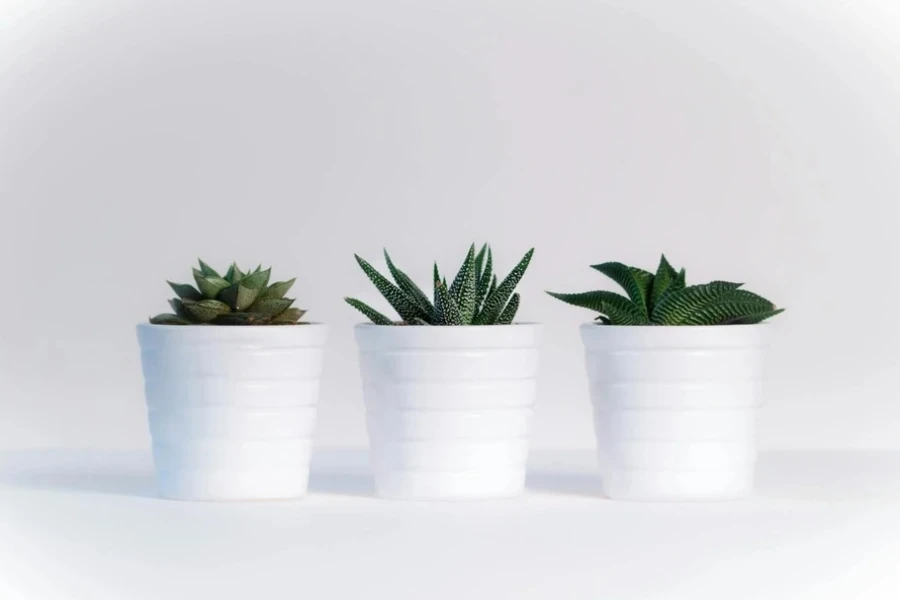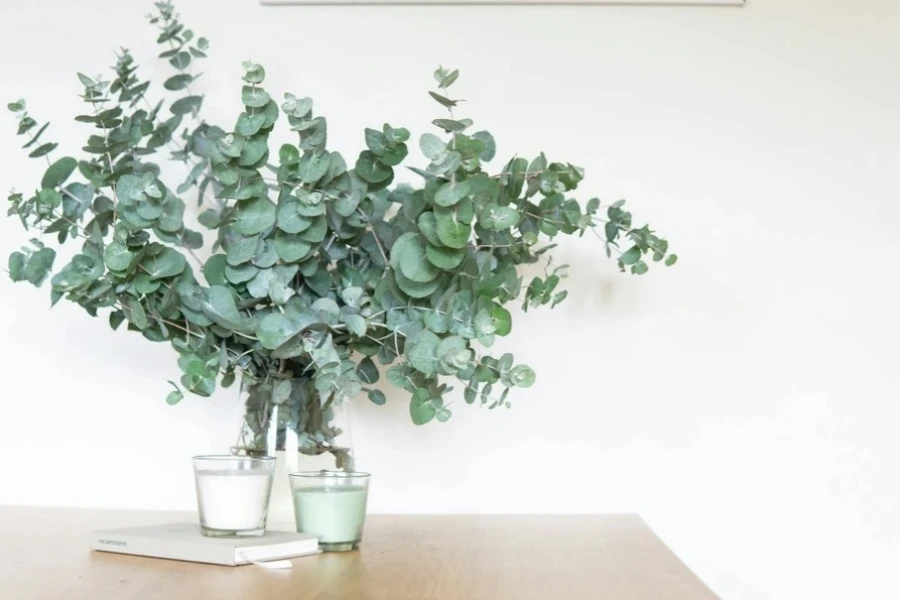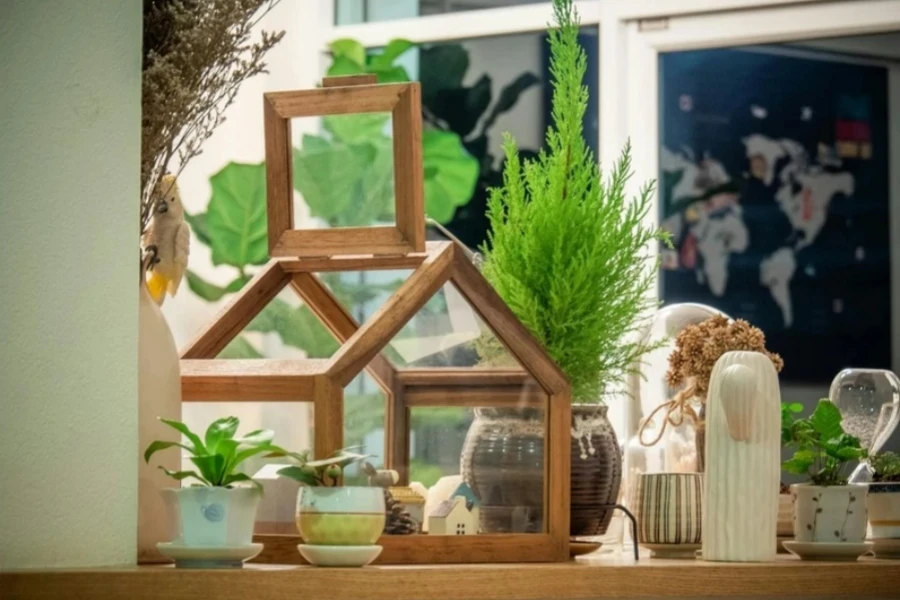Air plants, so-called because they don’t require soil to grow, are becoming an increasingly popular choice among homes and businesses thanks to their low-maintenance nature. Despite their minimal care, they look great, so are perfect for environments where live plants might struggle.
Simply pick a suitable place for them, and revel in the instant touch of nature that they bring. This makes them a great way to bring some life into various surroundings with almost no hassle.
Table of Contents
Air plants market overview
Top 4 air plant varieties
How to best care for air plants
Final thoughts
Air plants market overview

The global indoor plants market has experienced notable expansion due to changing consumer preferences and improved varieties. In 2023, the global indoor plants market was valued at USD 10.45 billion and is anticipated to reach USD 14.72 billion by 2032, with a compound annual growth rate (CAGR) of 3.88% during the forecast period, according to Business Research Insights.
Indoor plants are more than just a pretty look; they work like tiny superheroes for homes and workplaces, improving the air quality and reducing stress by bringing a touch of nature to any space, turning rooms or halls into green oases of calm.
Asia-Pacific and North America top the charts in terms of regions with the most significant market growth. Increasing awareness of their health benefits, growing interest in biophilic designs, and advanced technologies are making it easier for consumers to care for indoor greenery worldwide.
These factors combine to create incredible market opportunities for businesses willing to explore this domain. Below, we’ll provide an overview of four top air plant varieties anticipated to rock 2025.
Top 4 air plant varieties

Generally, there are two main types of air plants – desert rainforest varieties. No matter where they come from, most air plants feature tiny leaves, called trichomes, which are used by the plants to moisture from the air.
From exotic-looking flowers to colorful foliage, there is a lot that air plants can bring to a space. Air plant species worth investing in in 2025 include:
Tillandsia aeranthos
Tillandsia aeranthos, sometimes called the “Carnation of the Air,” are a beautiful and beginner-friendly air plant. Its mature leaves exude a stunning pastel green, while its flowers bloom an eye-catching pinkish-purple that look fantastic in small vases. The size of a small aeranthos is about 3-4 inches, while larger varieties can reach up to 4-6 inches.
This air plant is known for being tough and adaptable. They’re happy to live outdoors in suitable climates, but also thrive indoors, especially in humid areas such as bathrooms.
Tillandsia xerographica
Tillandsia xerographica is a big and beautiful air plant from Central America. It is a real showstopper in indoor gardens or darker rooms where an element of nature is required. Its striking round shape and ability to handle more sun and less water than other air plants make it a popular choice. This plant is so stunning that it is often used in professional floral arrangements – even wedding bouquets!
This versatile plant can change its look depending on how much water it gets: less water makes the leaves curl tighter, while more water gives it a fuller shape. Plus, it is one of the few air plants that can handle direct sunlight, making it easier to care for.
Tillandsia bulbosa
Tillandsia bulbous plants are named for their bulbous bases and twisting tentacle-like leaves, making them look like something straight out of a science fiction movie. As the plants grow, their leaves turn a deep purple and red before the plant blooms. Be aware that ants can often be found living in their hollow bases, especially when they’re placed outdoors.
Caring for Tillandsia bulbosa is simple: just soak them at least once a week and give them some filtered sunlight. Some artificial light options can also work, just be careful not to let too much water collect around the bottom leaves when watering, as this can lead to rot.
Tillandsia ionantha
Tillandsia ionantha, also romatically known as the “blushing bride sky plant,” is a beautiful air plant known for its vibrant pink and red colors and stunning purple flowers. It is also an epiphyte, which thrives without soil by attaching itself to trees or other surfaces. This makes it a plant that can be readily displayed in creative ways to add a natural glamor to any space.
This type of air plant is native to central and southern United States, where it usually grows in the shade of larger plants. The foliage resembles a mini pineapple, with slender, spiky leaves that are green at the base and colorful at the tips. It can grow up to a foot tall in ideal conditions, but the sizes usually remain smaller.
While it enjoys high humidity, the Tillandsia ionantha doesn’t like being overly wet. It is well-suited for indoor growing unless placed in a warm and humid climate. Outdoors, the plant prefers shade with occasional dappled sunlight. Good air circulation is key to keeping this air plant healthy and happy.
How to best care for air plants

While air plants are often sold as a perfect greenery option for people who aren’t good with plants, they do require some form of care. The main elements for doing so include:
- Light: Though they often hail from rainforests, these air plants thrive in bright, indirect light. Direct sunlight is a no-no, but make sure they get plenty of filtered light. If a space lacks natural light, consider using a full spectrum grow light to keep them happy and healthy.
- Soak: Most air plants enjoy a good soak for about 20-30 minutes weekly. If they seem a bit dry, you can also give them a light misting with water between soaks.
- Fertilizer: Giving air plants a monthly dose of fertilizer is like giving them a vitamin boost, helping them to produce beautiful blooms. Tt also helps to ensure they have all the nutrients they need to grow strong and healthy. Air plants have delicate leaves, so it is important not to overdo it with fertilizer.
- Humidity: Air plants have a unique way of perfoming photosynthesis called crassulacean acid metabolism (CAM). This involves opening their pores at night – generally the most humid time in their naturally dry habitats – to absorb moisture.
The life expectancy of air plants varies. Some plants live for just a year, while the most popular varieties only survive for three to five years. Remember, most air plants are easy to care for as long as they stay misted and are placed in suitable conditions.
Final thoughts

Investing in air plants can present a favorable business opportunity in 2025. As “going green” gains traction worldwide, their adaptability as well as ability to brighten up any space, from offices to restaurants to shops, has helped to make them a crowd favorite.
If you’re a business owner planning to jump into this sector, don’t forget to check Chovm.com, while you’ll find thousands of the most in-demand products.




